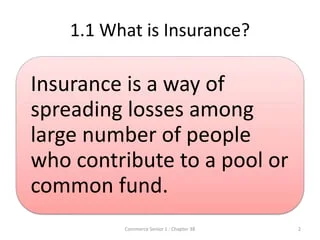All About Pacific Prime
All About Pacific Prime
Blog Article
What Does Pacific Prime Mean?
Table of ContentsAbout Pacific PrimeThe Greatest Guide To Pacific PrimeA Biased View of Pacific PrimeFascination About Pacific PrimeExcitement About Pacific Prime

This is because the information were collected for a period of solid financial performance. Of the estimated 42 million people that were without insurance, all but regarding 420,000 (concerning 1 percent) were under 65 years of age, the age at which most Americans end up being qualified for Medicare; 32 million were grownups in between ages 18 and 65, about 19 percent of all adults in this age group; and 10 million were youngsters under 18 years old, about 13.9 percent of all children (Mills, 2000).
These quotes of the variety of individuals without insurance are generated from the annual March Supplement to the Present Populace Study (CPS), performed by the Census Bureau. Unless otherwise noted, national quotes of individuals without medical insurance and proportions of the populace with various sort of insurance coverage are based upon the CPS, the most commonly utilized source of quotes of insurance policy coverage and uninsurance rates.
The Pacific Prime Statements

Still, the CPS is specifically valuable since it creates annual price quotes reasonably swiftly, reporting the previous year's insurance coverage approximates each September, and since it is the basis for a consistent collection of price quotes for more than 20 years, enabling evaluation of trends in insurance coverage with time. For these reasons, as well as the considerable use the CPS in other researches of insurance protection that are provided in this report, we count on CPS estimates, with constraints kept in mind.

The price quote of the variety of without insurance people expands when a populace's insurance coverage standing is tracked for several years. Over a three-year duration beginning early in 1993, 72 million individuals, 29 percent of the U.S. https://on.soundcloud.com/Boznd6XKBGjyrspT8. populace, were without insurance coverage for a minimum of one month. Within a single year (1994 ), 53 million individuals experienced at least a month without coverage (Bennefield, 1998a)
6 out of every ten without insurance adults are themselves used. Although functioning does improve the chance that a person and one's member of the family will have insurance policy, it is not an assurance. Even members of family members with two full-time wage income navigate to this site earners have practically a one-in-ten chance of being without insurance (9.1 percent without insurance rate) (Hoffman and Pohl, 2000).
Some Known Details About Pacific Prime
New immigrants account for a substantial proportion of people without medical insurance. One evaluation has associated a significant portion of the recent growth in the dimension of the united state uninsured populace to immigrants who arrived in the country in between 1994 and 1998 (Camarota and Edwards, 2000). Recent immigrants (those that came to the USA within the past four years) do have a high rate of being uninsured (46 percent), yet they and their kids represent just 6 percent of those without insurance policy nationally (Holahan et al., 2001).
The relationship between medical insurance and accessibility to care is well developed, as documented later in this chapter. The partnership between health and wellness insurance and health and wellness results is neither direct neither simple, a substantial medical and health and wellness services study literature web links health and wellness insurance coverage to improved access to care, better top quality, and improved individual and population health status.
Degrees of analysis for analyzing the impacts of uninsurance. It concentrates particularly on those without any kind of health and wellness insurance coverage for any length of time.
About Pacific Prime
The problems dealt with by the underinsured remain in some aspects similar to those dealt with by the without insurance, although they are typically much less serious. international health insurance. Uninsurance and underinsurance, nevertheless, include clearly different plan issues, and the techniques for addressing them might vary. Throughout this research study and the five reports to comply with, the major emphasis is on individuals with no medical insurance and thus no support in paying for wellness care beyond what is offered via charity and security web establishments
Medical insurance is an effective variable affecting receipt of care because both patients and physicians react to the out-of-pocket cost of solutions - https://anotepad.com/notes/23abm5wr. Medical insurance, nonetheless, is neither required nor enough to acquire access to clinical solutions. However, the independent and direct impact of medical insurance coverage on access to wellness services is well established.
Others will certainly acquire the health treatment they need also without health and wellness insurance policy, by spending for it expense or seeking it from carriers who provide treatment free or at extremely subsidized prices. For still others, medical insurance alone does not guarantee invoice of treatment as a result of various other nonfinancial barriers, such as an absence of health care carriers in their area, restricted access to transport, illiteracy, or linguistic and cultural distinctions.
Getting My Pacific Prime To Work
Official study about uninsured populations in the United States dates to the late 1920s and early 1930s when the Committee on the Cost of Treatment created a series of reports regarding financing doctor office sees and hospital stays. This concern came to be significant as the varieties of clinically indigent climbed up throughout the Great Anxiety.
Report this page